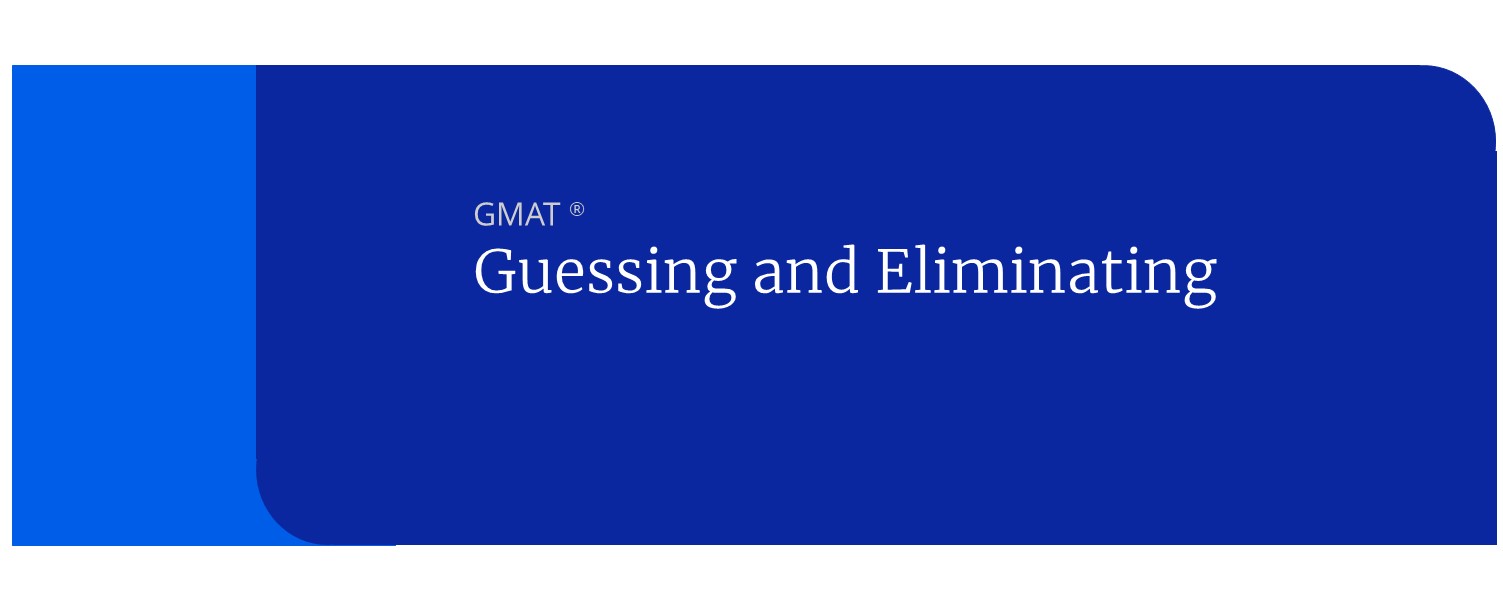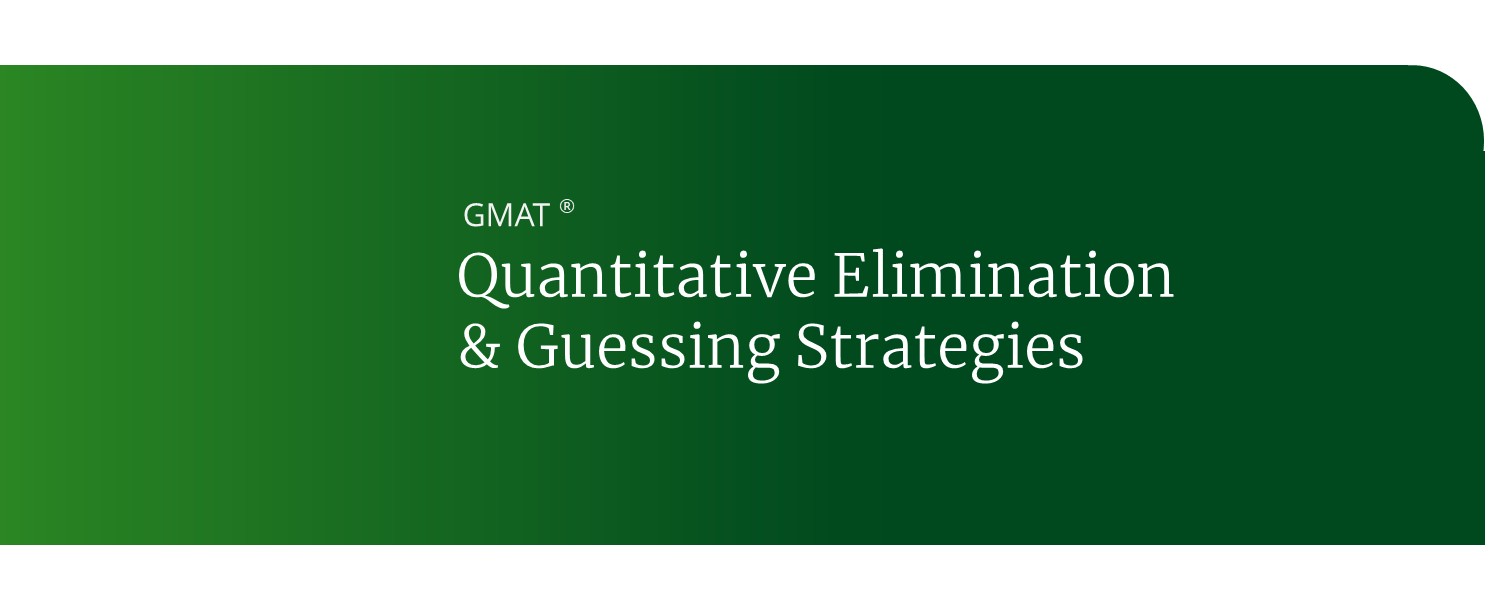Probability on the GMAT
On the GMAT, probability problems appear more frequently as high-difficulty questions than in low- or even medium-difficulty questions. Therefore, it should be fairly low on your priority list of content areas to brush up on. However, if you are scoring (or hoping to score) in or above the mid-600s, you should spend a little time becoming reacquainted with P.
Probability is a stated as a percent less than 100 or a fraction less than 1; it is found by dividing the number of desired outcomes by the number of possible outcomes. So if you are tossing a coin, there are two possible outcomes. If you want heads, there is only one way to get heads (the coin lands heads up). So the probability is 1 (desired) over 2 (possible), which is 1/2, or 50%.
Multiple events
When multiple events occur, such as multiple coin tosses, each event adds to the total possible outcomes. For the coin example, each toss has 2 possible outcomes. So the denominator for one toss is 2, for two tosses is 4 (2 x 2), for three tosses is 8 (2 x 2 x 2), etc. To quickly calculate total possible outcomes, raise the number possible for one event to the power of the number of events. For example, the total possible outcomes for 4 coin tosses is 24= 16 possible outcomes.
If you want to know the probability of two things happening, you multiply the probabilities of the two events. So the probability of a coin landing heads up two times is 1/2 times 1/2, which is 1/4. Note that the probability of two outcomes both occurring is less than the probability of either outcome occurring alone. That’s one way to remember that you multiply to find the probability of multiple items happening; every time you multiply a fraction by a fraction, the value decreases.
Non-occurrences
Probabilities are always 100% or less (1.0 or less, if using decimals). If the probability of x occurring is 70%, the probability of x not occurring is 100% minus 70%, or 30%. Sometimes on the GMAT, calculating the probability of a desired outcome is complicated. These probability problems are usually solved much more quickly by calculating the likelihood of NOT getting the desired outcome, then subtracting that probability from 1. Here’s an example:
A fair coin is tossed 4 times. What is the probability of getting heads at least twice?
Begin approaching this probability problem by calculating the denominator, the total possible outcomes. As noted above, each toss of the coin yields 2 possible outcomes, so 2 x 2 x 2 x 2 = 16 total possible outcomes.
Computing outcomes
The four outcomes could be any combination of H (heads) and T (tails): HTHT, THTH, HHTT, TTHH, HHTH, TTHT, etc. Counting all possible ways to get two or more heads (the number of desired outcomes) would take too long on Test Day, and inexperienced test-takers will waste time doing that. Kaplan-trained test-takers, however, will recognize that the number of UNDESIRED outcomes is much easier to compute: Either no heads at all (TTTT), or heads only once (HTTT, THTT, TTHT, TTTH). That means there are 5 undesired outcomes and a probability of 5/16 for not getting the desired results.
To calculate the probability of heads at least twice, subtract the probability of NOT getting heads at least twice (5/16) from 100% (16/16). The probability of getting heads at least twice is 11/16.
You’ll be pretty well set for Test Day if you remember what probability is (desired/total), how to calculate multiple probabilities (multiply them), and the shortcut for solving difficult probability problems (subtract undesired from 1).
Probability Practice Problem
Here is the more efficient way to solve this question without writing every possibility out. For every coin that you toss there are 2 possibilities. You can think of the total possibilities like a permutation problem.
__2__ __2__ __2__ __2__ __2_
1st 2nd 3rd 4th 5th
Just like in a GMAT permutations question when we are trying to determine the total number of codes possible or 4-digit numbers, we would multiply these individual probabilities together. Therefore, there are 2x2x2x2x2 = 2^5 = 32 total possibilities.
Next, we need to look at the numerator (desired outcomes). We want to find the all of the possibilities that have at least 2 heads, which means that we could have 2 heads, 3 heads, 4 heads, or 5 heads. To do so, we would need to count all of the different ways that these possibilities could be arranged. Again, we find ourselves in a situation that will be time-consuming and fraught with error. Instead of going down this path, remember that the sum of the probabilities of a complete set of mutually exclusive possible outcomes is 1. Thus, as is often the case on “at least” probability questions, we can look for those options that are restricted. Then we only have to count the options that have 1 or 0 heads.
TTTTT
HTTTT
THTTT
TTHTT
TTTHT
TTTTH
There are only 6 of those, instead of the 26 possibilities the other way.
Finally, we can either subtract 6/32 from 1 in order to remove all of the restricted possibilities from 1 or we can subtract 6 from 32 and use the result as the desired possibilities. Either way, the answer is 26/32, which you can reduce down to 13/16.
Let’s look at another to make sure we have this down. Try it for yourself before looking at the walkthrough.
Check Your Answer
Step 1: Total number of possibilities
There are 5 questions and each has 4 possibilities, so our total possibilities would be 4x4x4x4x4 = 4^5 = 1024
Step 2: Approach Desired Strategically
Here there are far more possibilities for 0, 1, 2, or 3 “B’s,” so let’s get a total for 4 or 5 “B’s”.
All B’s — B,B,B,B,B
Four B’s — A,B,B,B,B – B,A,B,B,B – B,B,A,B,B – B,B,B,A,B — B,B,B,B,A
C,B,B,B,B – B,C,B,B,B – B,B,C,B,B – B,B,B,C,B – B,B,B,B,C
D,B,B,B,B – B,D,B,B,B – B,B,D,B,B – B,B,B,D,B – B,B,B,B,D
3 x 5 = 15 because we can repeat the same pattern for each letter other than B
We can also calculate the total possibilities of 4 B’s by calculating the possibilities for each “no-B” position.
No-B,B, B, B, B = 3x1x1x1x1 = 3
B, No-B, B, B, B = 1x3x1x1x1 = 3
B, B, No-B, B, B = 1x1x3x1x1 = 3
B, B, B, No-B, B = 1x1x1x3x1 = 3
B, B, B, B, No-B = 1x1x1x1x3 =3
A total of 15 possibilities with 4 B’s in the mix
That gives a total of 16 different ways that a student can choose at least 4 B’s here.
16/1024 = 1/64 as our final probability.
Keep these two decisions in mind each time that you approach a tough probability question on the GMAT quantitive section. You don’t have to write out all of the possible outcomes in order to tackle these on test day!
Jennifer Mathews Land has taught for Kaplan since 2009. She prepares students to take the GMAT, GRE, ACT, and SAT and was named Kaplan’s Alabama-Mississippi Teacher of the Year in 2010. Prior to joining Kaplan, she worked as a grad assistant in a university archives, a copy editor for medical web sites, and a dancing dinosaur at children’s parties. Jennifer holds a PhD and a master’s in library and information studies (MLIS) from the University of Alabama, and an AB in English from Wellesley College. When she isn’t teaching, she enjoys watching Alabama football and herding cats.


